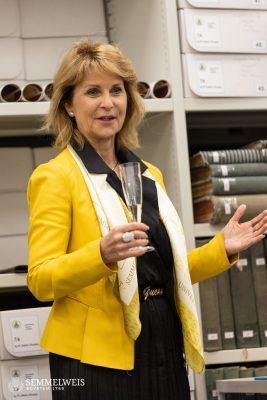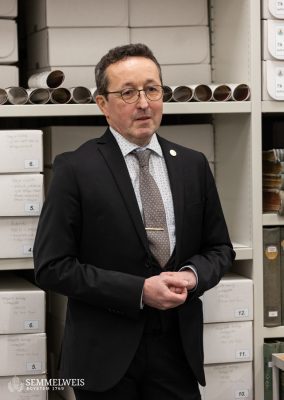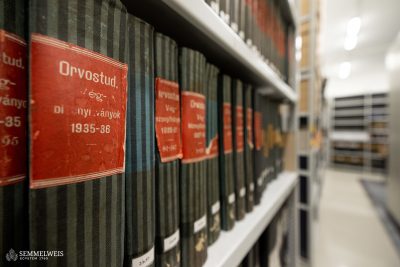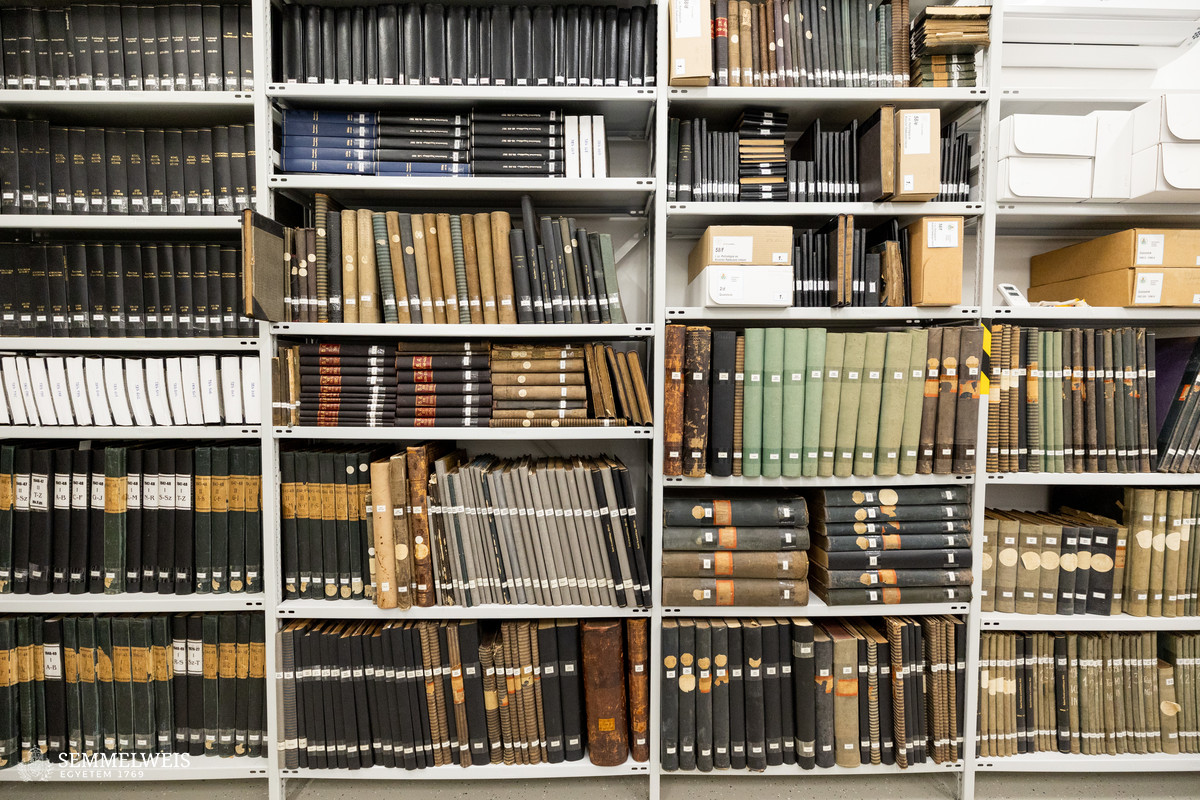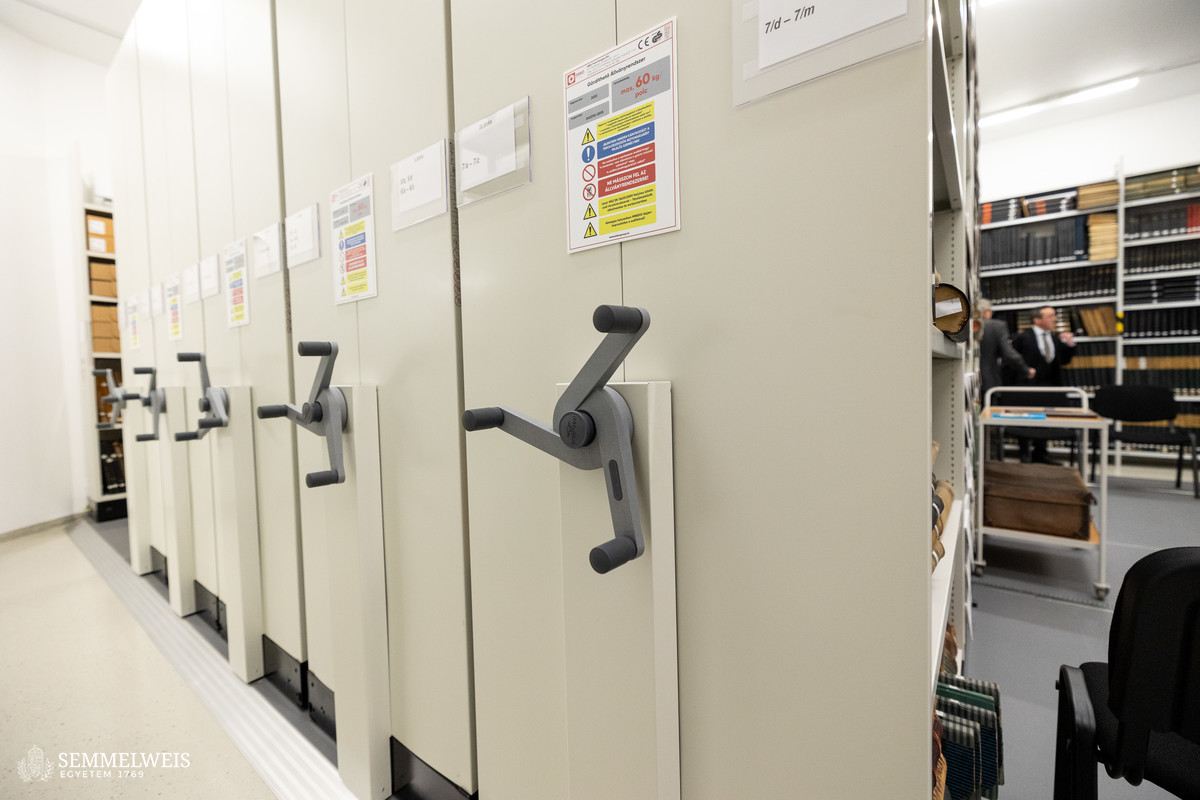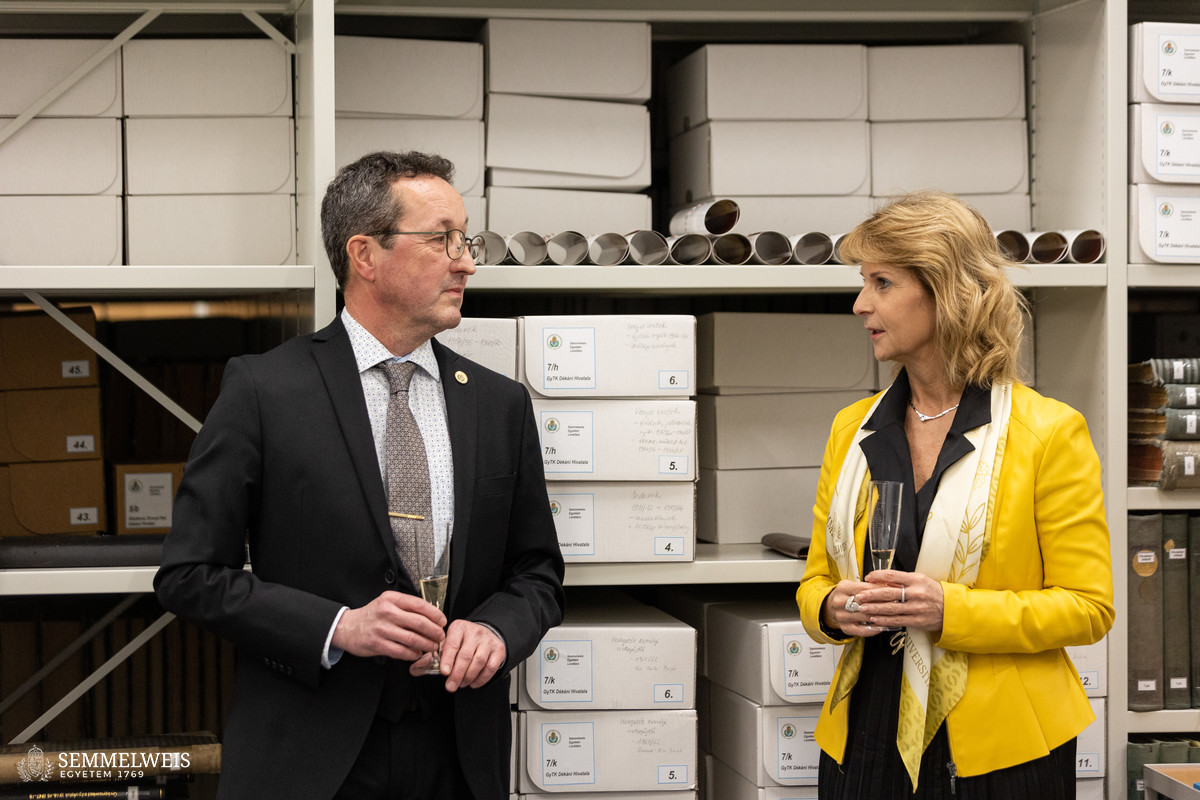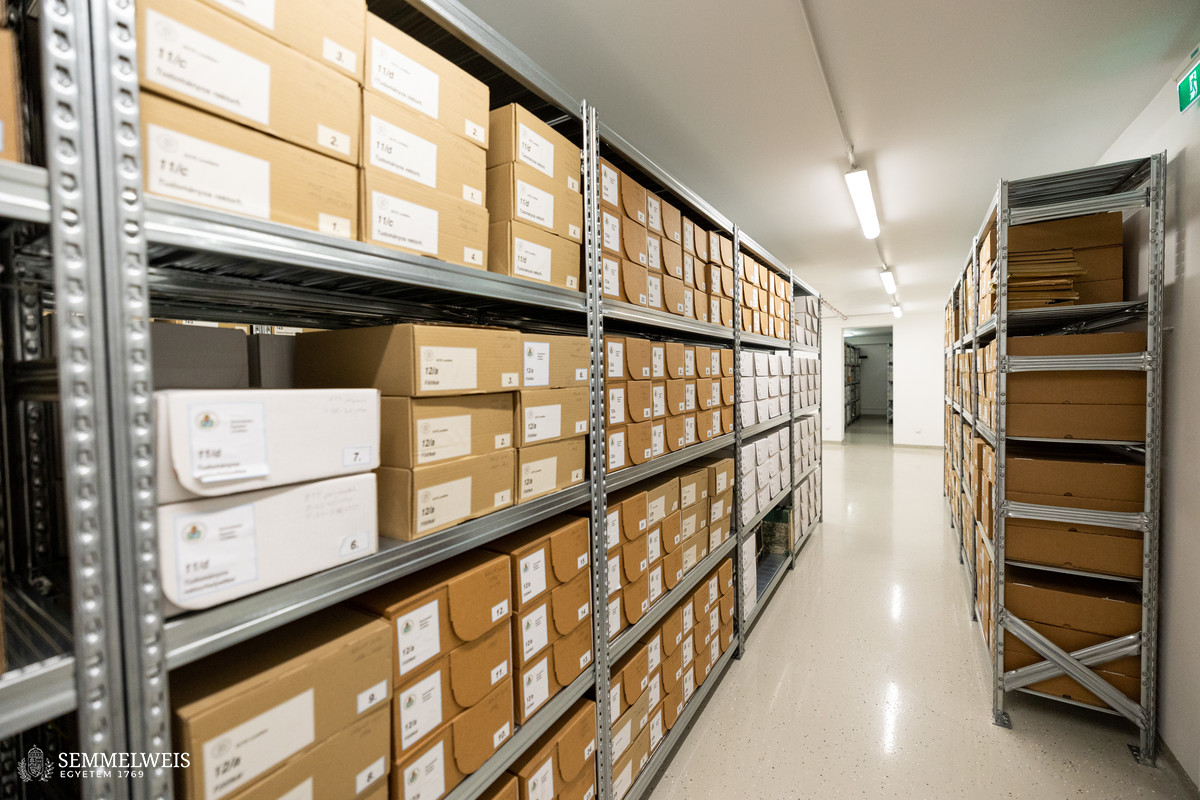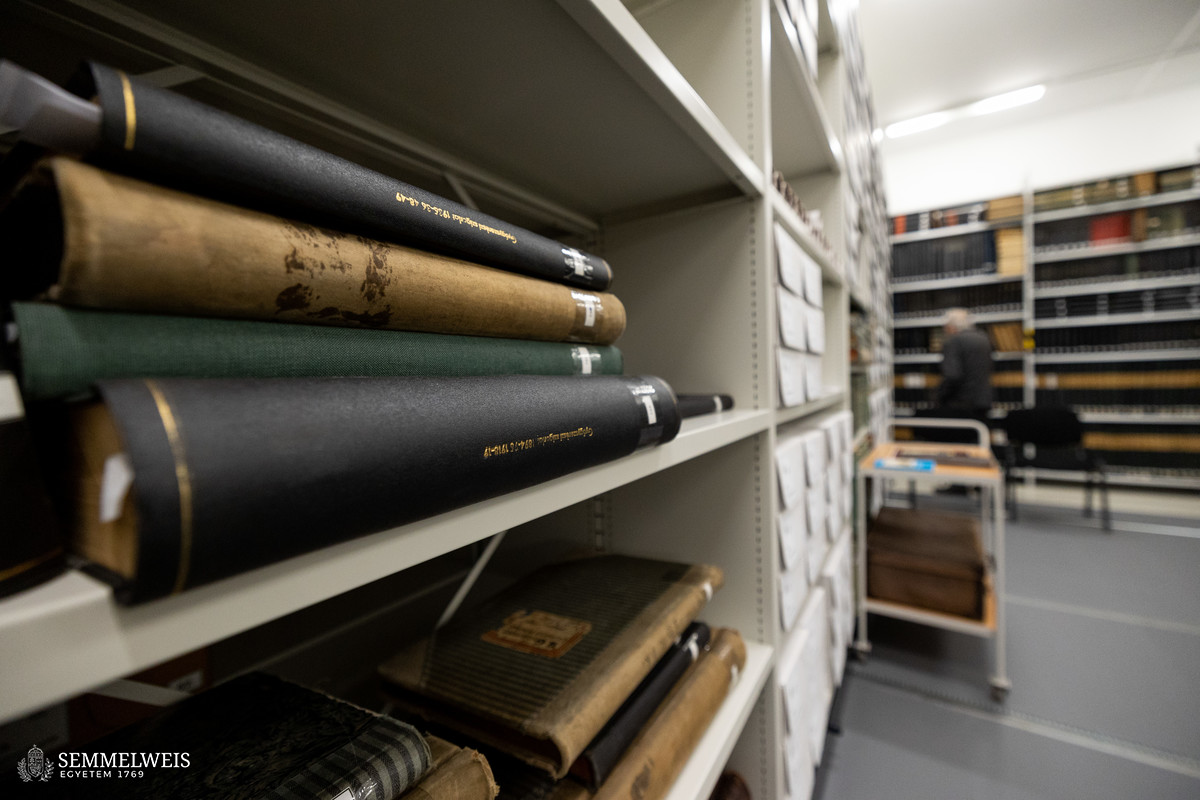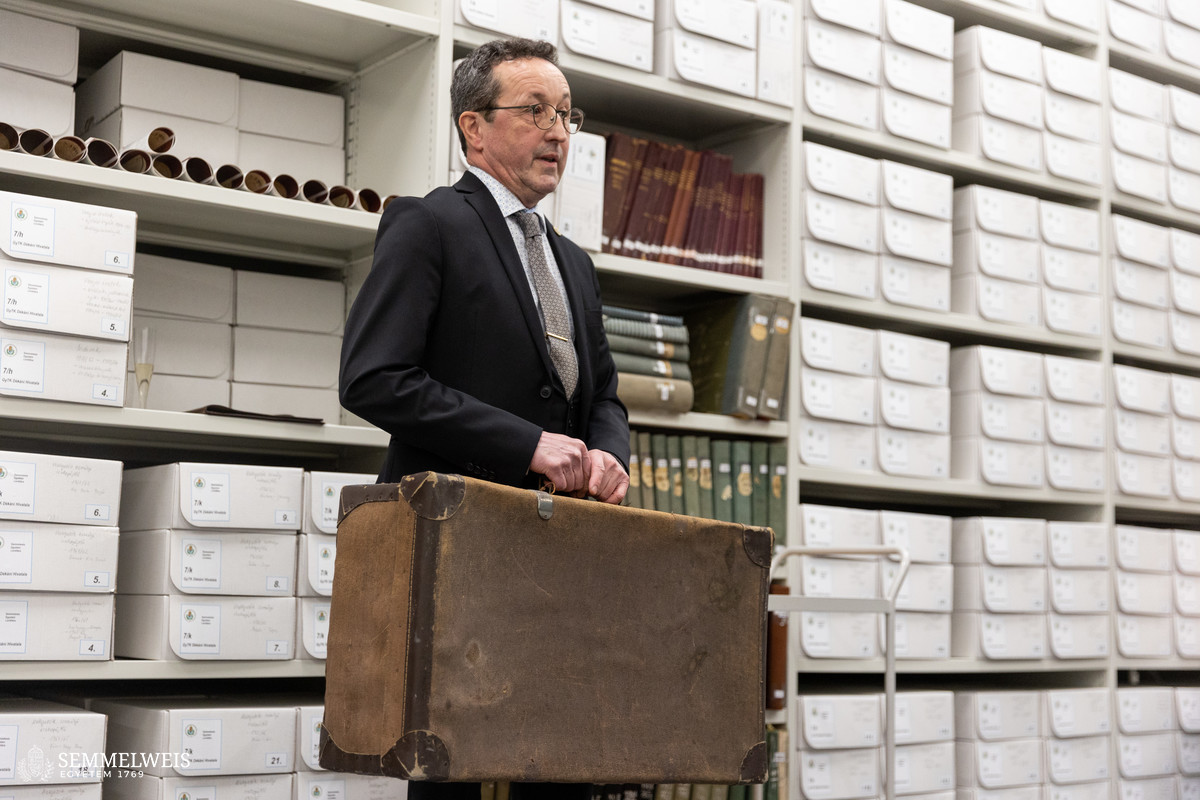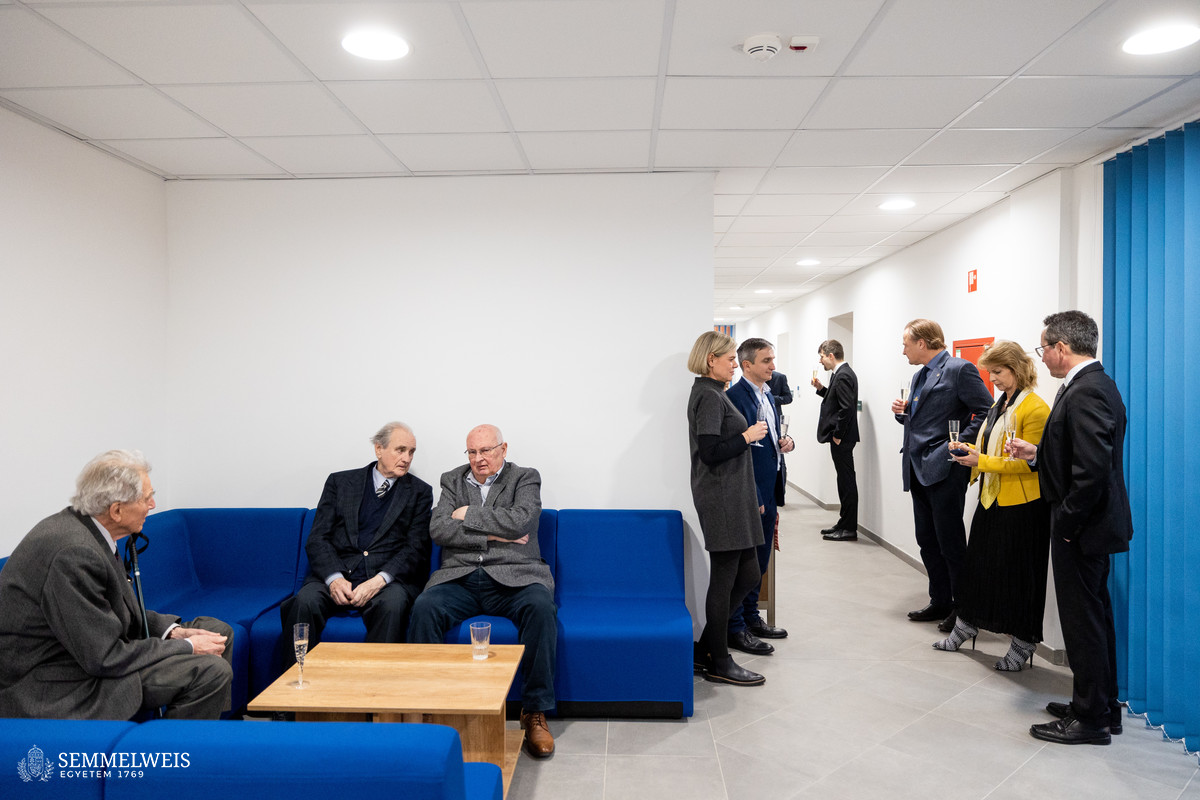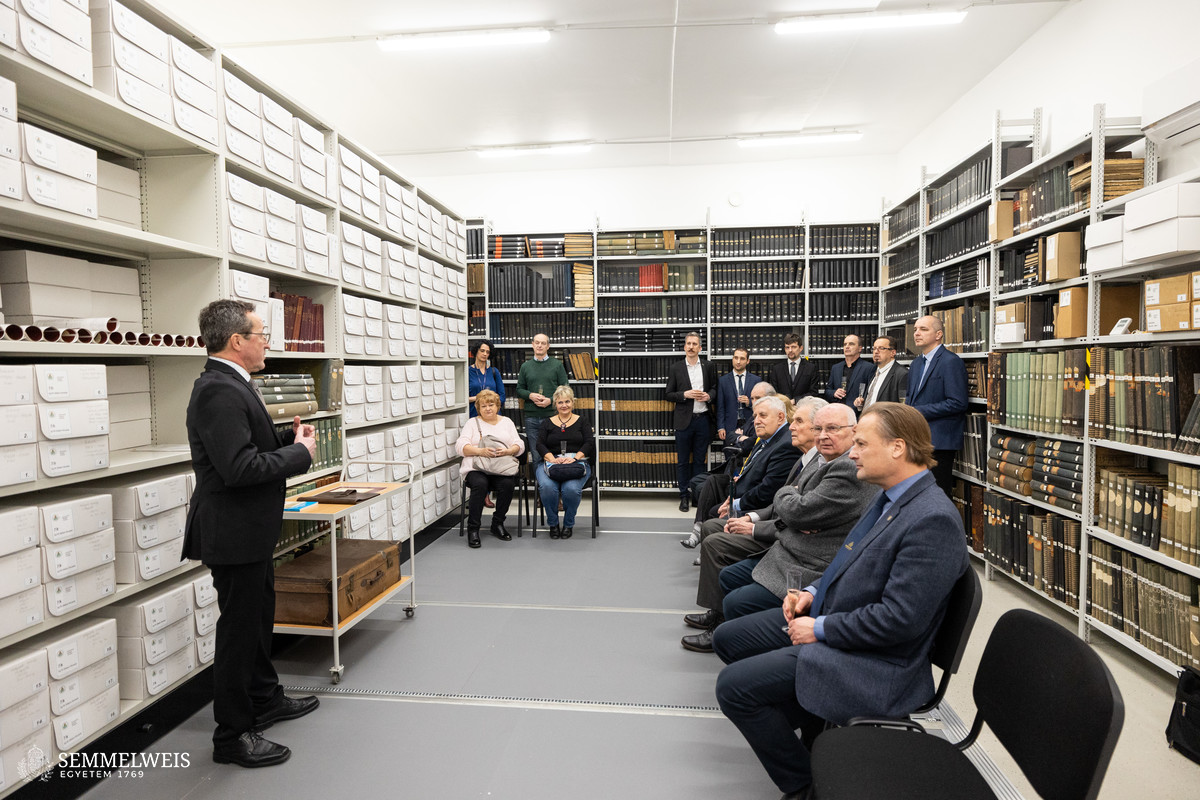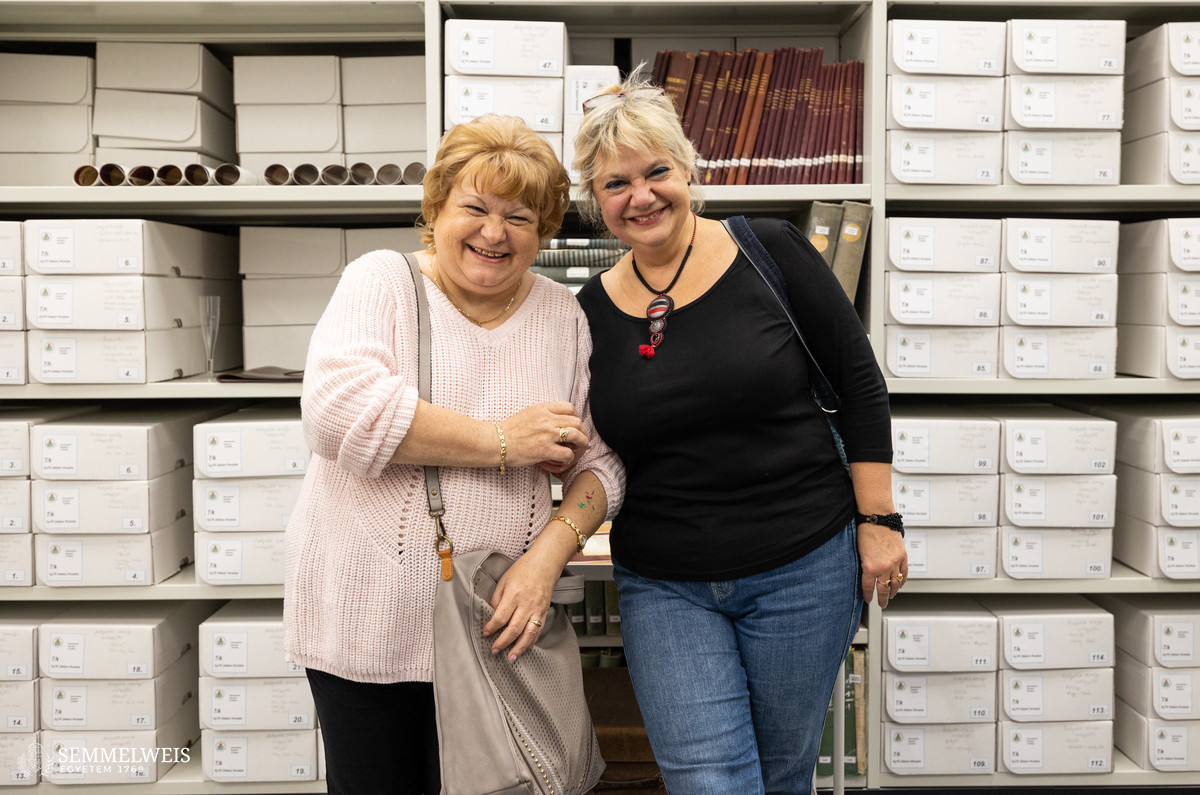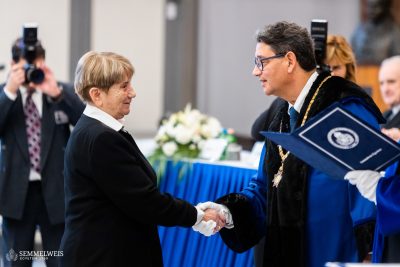“May never a day should be more uneventful than this day, when we celebrate the 80th anniversary of the Department of Pulmonology in the morning and the 30th anniversary of the University Archives in the afternoon,” Dr. Lívia Pavlik, Chancellor of Semmelweis University began her welcome speech at the opening of the new building of the Central Archives.
In the courtyard of the Szent Rókus Clinical Block Directorate, the building, renovated with a state subsidy of around 290 million HUF, will ensure the preservation of the university’s records from the past 253 years, which are still accumulating despite digitalisation, for the coming years.
The Chancellor emphasized that while the beautiful property portfolio is a great value, it is also a major challenge to manage and renew the university’s 400,000 square metres of owned property, while ensuring patient care. On the renovation, she praised the smooth, quick and timely completion of the project, adding that it was a relief that the Archives had been temporarily housed in the Rókus block.
“Thirty years in the life of a collection is not a long time, but for a university archive it is a relatively long period, especially considering that in Hungary there are perhaps four university archives older than Semmelweis University,” Dr. László Molnár, Director of the Archives, at the opening ceremony emphasized. “And it is particularly delightful that the new building was able to open its doors on the anniversary, with construction work having started in May 2020, following a government decision to provide the necessary funding, and the technical handover took place on 14 December. All this despite the fact that the construction industry had to cope with shortages of raw materials not seen since the socialist deficit economy,” – he added.
Dr. László Molnár also thanked Navaran Architectural Design Office Ltd., as well as the experts of the Investment, Technical Development, Sports Operation, and Public Procurement Private Limited Company (BMSK Zrt.) responsible for the implementation of the project, pointing out that the involvement of the archives’ employees in the planning from the very beginning made the work much easier.
The slab of the old building in the courtyard of the Szent Rókus Clinical Block Directorate was first demolished by BAU-TRADE Construction Design, Construction and Trade Ltd, and then the ceiling of the basement rooms was insulated to protect the collection from damp.
“In the 18th century, there was a small lake in this area, and although the area was drained during the development of the town, the movement of groundwater has been preserved and the collection needs to be protected against moisture seeping up,” Dr. László Molnár pointed out. This was followed by the construction of new structural elements, the relocation of the partition walls and the layout of the rooms, as well as internal fitting-out work.
Following the technical handover, the university’s archives dating back to the 1700s were professionally furnished and housed in the new, air-conditioned rooms: the collection of Hungarian-language documents – such as the batch list of doctors and midwives graduating in each academic year, reports of the council meetings and autopsy reports at the former Faculty of Medicine, etc. – as well as the estate records were given a separate room. Of particular importance are the complete records of János Szentágothai, former head of the Department of Anatomy, including his correspondence with foreign journals and scientific bodies, but the archives also hold manuscripts of scientific articles and texts of lectures, as well as some of the papers of the eponymous Ignác Semmelweis, along with those of János Bókay Jr. The latter includes, for example, photocopies of two of his childhood letters and a copy of a letter he wrote to the Academy of Sciences on the discovery of the causative agent of puerperal fever.
The archives are really the memory of a community, the basis of its identity, this external winchester, if you like, only preserves information on more durable media in good cases,”
Dr. László Molnár said. As an example, he mentioned that the oldest surviving university degree issued in Hungary in 1775 by Semmelweis’ predecessor, the University of Nagyszombat, is also kept in an archive in Bratislava. However, Semmelweis University also has an original copy of a Master of Surgery degree issued one year later. All this is thanks to the careful archiving of documents, to the heroes, known and anonymous, who, even in the turbulent times of Hungarian history, took care to keep the history of the university traceable.
The director mentioned by name Jenő Dunai, who, as head of the Dean’s office at the Faculty of Medicine between the two world wars, not only ensured that the documents were professionally managed, but also that they were stored in the cellar at the beginning of the bombings during the 2nd World War.
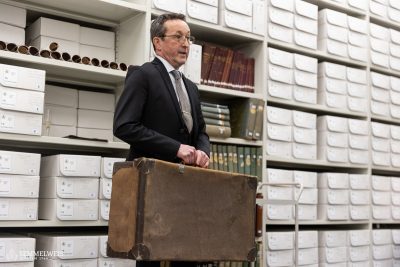 Among the archives’ artefacts – in addition to the stamps used for the exhibition of the first surgical letters, hundreds of photographs, commemorative coins and Endre Hőgyész’s syringe – is a suitcase in which an unknown university worker in 1944, before the Soviet siege closed, had taken a number of valuable documents from the 18th century to 1941 to Dunapataj, to a family he knew. “We don’t know who he was, but he never went back for the suitcase, which was finally returned to the university in 1999,” Dr. László Molnár said.
Among the archives’ artefacts – in addition to the stamps used for the exhibition of the first surgical letters, hundreds of photographs, commemorative coins and Endre Hőgyész’s syringe – is a suitcase in which an unknown university worker in 1944, before the Soviet siege closed, had taken a number of valuable documents from the 18th century to 1941 to Dunapataj, to a family he knew. “We don’t know who he was, but he never went back for the suitcase, which was finally returned to the university in 1999,” Dr. László Molnár said.
At the handover ceremony, the director thanked the current and two former rectors for their continuous support for the care of the collection: at the time, the decision to organise the documentary heritage, which had been kept in archives until then, was made at the instigation of Dr. László Szögi, followed by the decision to establish the archives by Dr. Miklós Réthelyi, and Dr. Péter Sótonyi was a committed patron of the institution because of his interest in the history of medicine and the history of the university. Following the organisation of the 146 linear metres of the collection of the Faculty Archives and Historical Archives, Dr. László Szögi published the first repertory of the records kept in the University Archives in 1982. It is considered the core material of the archives. “Today, the collection is more than 700 metres of documents,” the director said. He was the sole custodian of the archives for some 15 years, and only later did the number of staff increase to four.
“The most important task of the next few years is to collect the records of the past years that have not been transferred due to lack of space from the individual faculties and departments, and then preserve them for posterity after professional processing and cataloguing,” Dr. László Molnár told our website. After 15 years of archiving, the archives are obliged to take over the documents from the collection.
Potentially, there is room for another 500-600 metres of documents in the new rooms, which, taking into account the current digitisation process, I estimate could take 10-15 years,”
– the director added.
Work is also underway on the Hungaricana project, recently funded by the central budget in partnership with Arcanum, to make the university’s decision-making reports from 1896-1970 digitally accessible and searchable, and to produce agendas for future historical research. The University Library also participated in the public digitisation project, digitising a number of classic medical books.
The services of the university archives are most often used for research on institutional and family history, or when it is the anniversary of an institution, training course or significant event. Most recently, they searched for old documents in connection with the International 40 series of events, and the director noted that there had been several examples of German-language training before, since in the 1830s there were separate German and Hungarian-language trainings for surgeons and pharmacists, and in the late 1950s there were also courses for students from the GDR. “The most significant interest from private individuals is in family history: many inquiries are received from abroad, even from abroad, inquiring about the ancestors of former doctors,” Dr. László Molnár added.
Personal bequests will be the main source of further additions to the collection. According to the Director, there are professors who have already begun to organise their professional legacies in their lifetime, and from time to time new material arrives. In the next two to three years, they plan to organise a permanent exhibition of the archives’ artefacts – which were on display at the 250th anniversary exhibition at the Museum of Medical History – in a room of the building that is still empty.
Melinda Katalin Kiss
Translated by Rita Kónya
Photo: Attila Kovács – Semmelweis University
